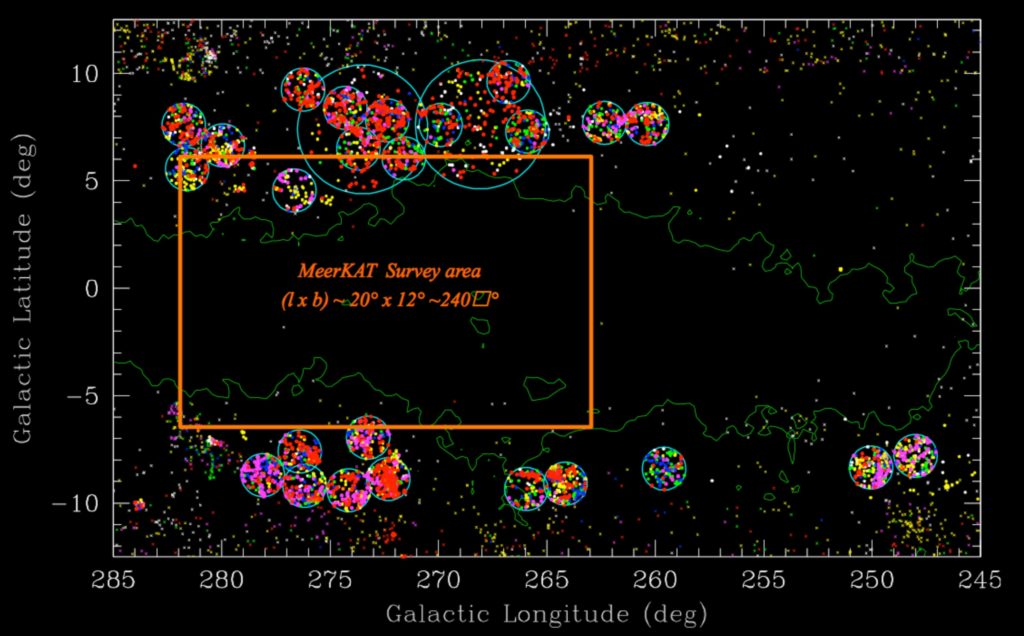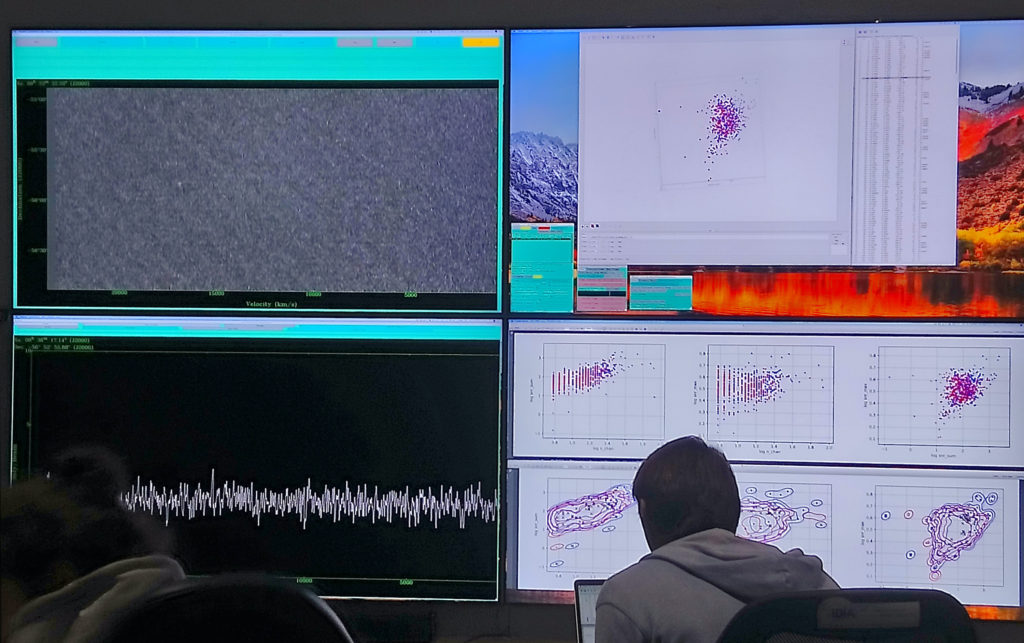Seeing through the Milky Way – Visualizing early MeerKAT data to confirm supercluster discovery

Prof. Renée Kraan-Korteweg’s team used IDIA to reduce early science data obtained with 16 MeerKAT dishes in January & March 2018. This is a pilot project towards the mapping of the recently discovered major Vela Supercluster.
The Vela Supercluster (VSCL) has only been recently discovered because the majority of it lies behind the centre of our own galaxy, making it very difficult to see. A supercluster is the largest structure in the universe that is bound by gravity. In 2017, galaxies observed above and below the centre of our galaxy were shown to form such a structure. But to be able to see the part that is obscured by the Milky Way, radio telescopes are needed. This is because radio telescopes can see through the dense clouds of dust and interstellar material in our galaxy and observe the hydrogen gas in the galaxies behind it.
The observations with MeerKAT were designed to test how well MeerKAT does against predicted detection rates and to compare radio measurements with existing observations. The data were also meant to be available to other researchers to get hands-on experience with MeerKAT neutral hydrogen data.
Following an application to use IDIA for the data reduction process, the data was transferred from SARAO to IDIA. The co-Principal Investigator, Paolo Serra from Italy, reduced the data using a pipeline under development at SARAO and INAF. As the data processing tools were still in development, the pipeline was run partly on the IDIA research cloud and partly on a computer in Italy. The data reduction and the first extraction of galaxies was done for 6 data cubes in just a few days, which would have been unthinkable a few years ago.
 Very preliminary results were presented at the PHISCC meeting in China in June 2018, which was held jointly with the SA-China Radio Astronomy Forum on FAST- MeerKAT and other SKA Pathfinder Synergies.
Very preliminary results were presented at the PHISCC meeting in China in June 2018, which was held jointly with the SA-China Radio Astronomy Forum on FAST- MeerKAT and other SKA Pathfinder Synergies.
The team members of this project are researchers Renée Kraan-Korteweg, Sarah Blyth, Claude Carignan, Tom Jarrett and Ed Elson from IDIA, collaborators in Italy Paolo Serra and Mpati Ramatsoku, Gyula Józsa from SARAO and Rhodes University and Michelle Cluver, formerly from IDIA, now at Melbourne University. Three PhD students at UCT are also involved in this project: Narges Hatamkhani, Themba Gqaza and Julia Healy.
Some members of the collaboration came together at the IDIA visualization lab in October 2018 to carry out some fine tuning on the data processing and to inspect the data cubes using fly-throughs. Other members of the team joined remotely. Good use was made of the IDIA visualization lab. Visual and algorithmically identified candidate detections of galaxies in the data were compared. The entire team could analyse the dataset simultaneously, and in great details, whether in the visualization lab or remotely, which could also not have been done a few years ago.
Improvements to the data processing were identified and the work continues.
